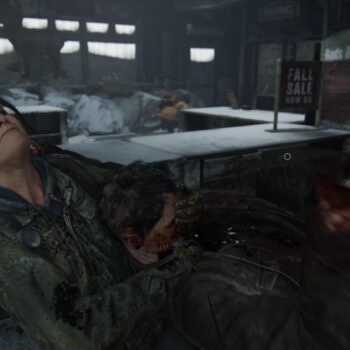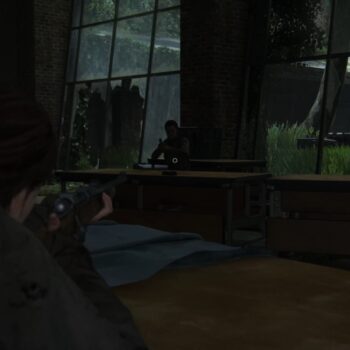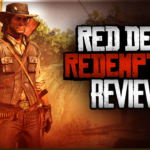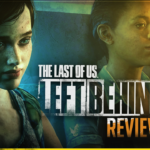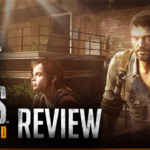Game developer studio Naughty Dog amazed the world with The Last of Us back in 2013 and was regarded by many as one of the best video game ever made, in 2014 they released Left Behind as downloadable content which only takes 2 hours to complete but still packed an emotional story in such a short game. In 2020 Naughty Dog released The Last of Us Part II with a lot to live up to, did it meet expectations? Let’s dive in.
This review has no spoilers at all, which made this review difficult to make since the game is incredibly story driven.
In 2021 a patch was released for the PS5 version which allows the game to operate from 30FPS on PS4, to target 60FPS on PS5. There also some resolution upgrades and faster load times on PS5.
Plot
The game takes place 4 years after the events of the original The Last of Us. Ellie and Joel are both in the game, but this time Ellie is the main character and Joel makes less appearances than the original game.
Ellie and Joel have both settled in the town that was helped established by Joel’s brother, Tommy. It’s a thriving community with electricity, shops, bars, daycares, assigned duties to citizens like security detail and farming. Things seem rather peaceful, until it isn’t. The game then centers around a couple of main stories, one of them being a revenge story.
Another part of the game follows a new character Abby, and your opinion of her will most likely change as the game unfolds as you realize that The Last of Us Part II story is much deeper and complicated than the original game’s story.
As you progress throughout The Last Of Us Part II, you’ll often view moments of vulnerability, hardship, laughter, loss of loved ones, anger, hate and so much more. Making this game a bigger roller coaster of emotions than most movies or TV shows could ever deliver. However, the most powerful item from the game is taking the side of someone’s decisions. This game will make you think a lot from different character’s perspective of what’s right vs wrong. One minute you hate someone’s decision, the next you might be sympathetic towards them. It’s complicated to explain without spoiling anything, but let’s just say that this game can get deep at times.
Characters
As mentioned earlier, Ellie is the main character. She’s now an adult and has a tough personality when the going gets rough, like Joel from the first game. We do see a light side to her personality but most of the time she’s full of anger and hate which is understandable in a post apocalyptic world. Despite all the evil things she does for sometimes the right and wrong reasons, you’ll feel emotionally attached to her struggles.
While Joel is seen throughout the game, we don’t see his tough side as often. This game takes a flip from the original. In the original Joel was the tough and hard personality while Ellie was a bit more patient. This time their personalities have slightly swapped. Joel faced most of his hardships and is finally trying to enjoy life, whereas Ellie is introduced to new chaos.
A great addition to the game is Abby, who in my opinion is the most complex character in the game. You might like her, hate her, then like her again, then hate her again and so on. Without spoiling anything, her decisions and actions were the ones that stood out to me the most, and at many times even more than Ellie’s.
This game has no shortage of side characters like the first game, but certain side character’s roles have greater screen time, more dialogue and are more important to the story than they were in the first game. Some characters you’ll like, some you’ll despise and others you might have love/hate feelings for. Each one has a unique personality and can change the atmosphere of the game when your character is focused on them.
Another thing that’s been improved upon are enemies. Yes, the infected are still high in population and clickers are still as creepy as ever. To make things worse there are new infected enemy types, some hit harder while others stalk you in scary environments.
The same can be said about human enemies. Not much is known about them at first, and some are shrouded in mystery but in the short interactions with them, you get an almost complete picture of what they’re like as a human being.
Like I said of the original game, I’ll say again, humans are the worst monsters in this game. There are enough times that the game will keep you on edge due to the action of human enemies. In fact, some human enemies have more screen time than the first game, to the point that you remember their name and what their objective is, unlike the first game.
Combat and Upgrade System
Just like the first game you start with minimal weapons and skills. It’s best to use stealth, when possible, otherwise running in attacking enemies head on can backfire a lot.
The listening skill to detect where enemies are is still available and is your greatest skill to stealth attack enemies or possibly setup traps. Despite having the listening skill, the enemy AI is tougher this game. They’ll often travel in groups, so while you’re hiding you might end up getting surrounded and forced into direct combat. To make things even tougher, some human enemies have tracking dogs that can trace your exact location.
Combat at times is slightly tougher than the first game due to the number of enemies you’ll encounter at a time, the type of infected you’re fighting or if your enemies are wearing body armor. The ability to throw loose objects as a noise distraction is still available. Your character will die a ton of times. Of course, you can adjust the difficulty, but I personally found this game more challenging than the first one.
Infected enemies from the first game make a return but new types appear as well. Some are easy to kill but in direct combat, some of them are tough. Ellie’s melee combat doesn’t hit as hard as Joel did in the first game, even though she uses a switch blade. However, thanks to her switchblade, her stealth kills are a bit faster than what Joel’s used to be.
An element from Left Behind is having enemies fight one another. There are times when you will have the ability to trap enemies and make them fight each other leaving less work for you.
Human enemies are smarter, tougher and travel in bigger groups in this sequel. Fighting a human enemy is rather easy. What makes humans tough is if one detects you, they’ll contact others for help. That’s what makes the use of stealth essential.
The upgrade skill system makes a return. This is one of the reasons I took my time exploring every building, room, and shelf possible, to ensure I could make my character as strong as possible to upgrade weapons and skills. You’ll want to think carefully about what skills to upgrade early in the game as upgrading skills takes time and your character won’t be God level near the end of the game like some other games. Even as you upgrade your skills, the game will remain challenging.
The ability to upgrade weapons is also challenging. Weapon parts are scarce throughout the world and to make things even more difficult, you can’t use the parts to upgrade a weapon until you find a weapons workbench. This means if you have parts to upgrade weapons, you’ll need to be smart about which ones to upgrade because it could be a while before you can upgrade another one.
The crafting system makes a return and thankfully hasn’t become complicated like in some RPGs. In fact, it’s so similar to the first game that crafting happens in real time, so if you’re in the middle of a fight and start crafting, you can get attacked.
My only complaint for character mechanics is how pathetic the characters are at jumping. This is a personal gripe and doesn’t impact the conclusion of this review at all. Thankfully jumping is a rarely needed skill.
Environment & Graphics
This game should take you about 24 hours to complete, but I clocked 29 hours. Remember, that’s because I took my time exploring additional areas to get skill and weapon upgrades. I also read a ton of letters and notes left behind in abandoned areas. These letters show the struggles of non-existent characters and in their chaotic world. Ellie also has her own journal with notes and artwork that I would view every so often.
The game takes place in multiple areas of the US but most of it in a ruined Seattle. Throughout this area you’ll go through ruined cities, suburbs, creepy dark tunnels and more.
Just like the first game, most of the map is linear so your character will follow a set path. However, a lot of these outdoor paths are larger and allow more buildings and areas to move through during times of combat. The one exception to this is near the beginning of the Seattle setting. This ruined city is an open map to be explored, this is where I spent a good chunk of time looking for things to make my character stronger. For instance, one time I found a hidden buried bank, but it was infested with infected enemies.
I have to say, this is one the best-looking games I’ve ever played. It’s truly astonishing how visually amazing the game looks and how smooth it performs on PS5. You will not be disappointed at all by the visuals.
Facial animation is important, especially for a game like this one which is driven by strong emotion. Character animation is done superb in this game.
Cutscenes mix between pre-made videos and in game graphics. There are many times that I couldn’t tell if in game graphics were being used or pre-recorded video because it just looks that good.
There’s not much in terms of doing side quests. Anything outside of the main game is more about finding hidden collectables or a cache of supplies.
Multiplayer
In the original Last of Us, there was a multiplayer mode. It wasn’t bad but it was easily overshadowed by the campaign. I think Naughty Dog studios realised this, since there isn’t a multiplayer mode this time. This isn’t a bad thing since the campaign is simply incredible. That plus Naughty Dogs announced an online multiplayer The Last Of Us game.
Sound
Gustavo Santaolalla returns to do the soundtrack and once again strikes gold. The soundtrack sets the perfect tone, whether it be fast paced for action sequences or an unsettling tone when things become bleak.
Troy Baker returns to voice Joel and does great once again. Ashley Johnson also returns to voice Ellie, whom she voiced amazing in the first game, but this time Ashley takes the spotlight. Since the game mainly focuses on Ellie and has a lot more darker moments than the first game, she shines as the outstanding star of the game. However, Laura Bailey who voices Abby is an outstanding newcomer to the series. The work done by both Ashley and Laura is superb.
Not to forget is side characters. Each one has great dialogue but also well done in voice acting. This includes some of the villains as well. A lot happens in this game but thanks to the incredible script and brilliant voice acting of everyone, each side character is memorable.
Considering how amazing the voice acting is and amazing graphics of each The Last Of Us game, I often wonder why a TV adaptation is being made.
Infected enemies once again sound amazing. Whether they’re simply patrolling an area, or the creepy clicker is well, clicking.
Conclusion
The original The Last Of Us set a new standard in the gaming industry, and I as I mentioned earlier it’s regarding by many globally as of the greatest game of all time. So, Naughty Dog studios set the standard too high, even for themselves. However, with spectacular hard work, they achieved that I thought was impossible. I honest believe this game surpasses the original one.
This is a must play game for anyone, of course you must play the original The Last Of Us first, but that’s also a must play game.
Score:
10/10
Pros:
-Amazing story
-Campaign length
-Skills upgrade
-Graphics
-Voice acting
-Control layout
-Combat mechanics
-Sound effects and soundtrack
-Tough enemies
-Very suspenseful
-Side characters
-Smooth gameplay
-Fast crafting system
Cons:
-None



